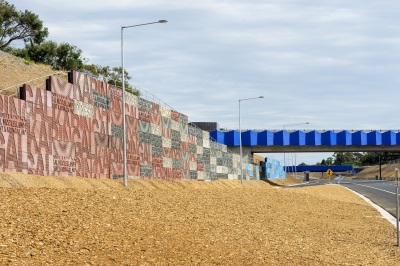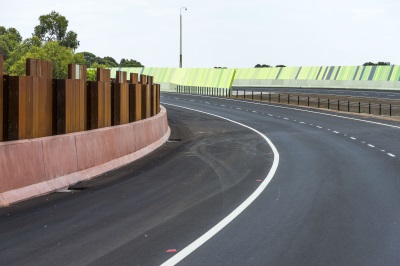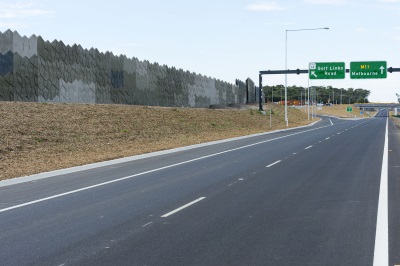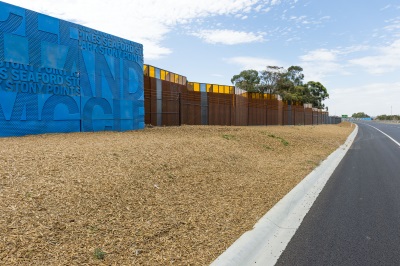


Noise walls
Four types of noise walls are used on Peninsula Link, each with unique characteristics on both the freeway and the community sides of the wall. A special light spill barrier has also been installed for the sensitive environment of The Pines Flora and Fauna Reserve.
Text wallThe text noise walls respond to the intense suburban characteristic of the northern half of the freeway. Using a concept devised by sculptor Rosalie Gascoigne, words from local place names are sampled and represented as visual texture. A varying pattern of greys and terracotta fades to blue at transitions between walls. The text noise walls are made of a polyethylene, which is a dense kind of plastic commonly used for things like water tanks. |  |
Oxidised steelOxidised steel ages gracefully, gradually developing an attractive sheen. Viewed from the community side, it provides a gentle backdrop to the suburban rooftops. The noise panels are arranged in a zig-zag design, offering visual relief with alternating light and shade. The intermittent use of painted black panels adds visual interest. |  |
Geology wallThe Geology noise walls indicate the freeway's transition from urban surroundings to a rural environment. The intriguing texture, reminiscent of a rock face, is rendered in a range of coloured concrete panels, creating a pattern that sits well in a landscaped context. In some locations, it indicates the road has been built in a cut. The wall is topped with acrylic panels where view or sunlight is to be maintained. |  |
Acrylic panelsTransparent acrylic panels of soft sepia tones and shades of grey are used where other materials would adversely affect views or block out daylight to an unreasonable extent. Designers on the project used ResCode provisions in the Victorian Building Regulations to determine where acrylic panels should be used. These ResCodes set limits on how much overshadowing can occur on residential properties and define the minimum amounts of sunlight that a property’s open spaces should continue to receive. |  |